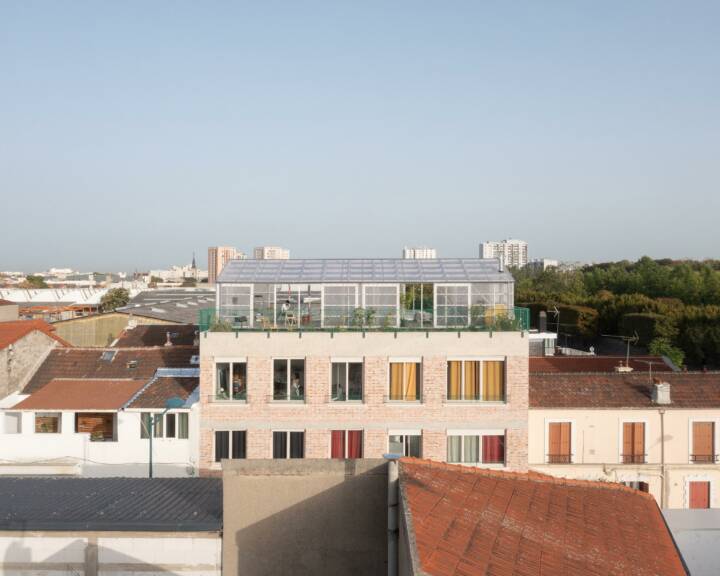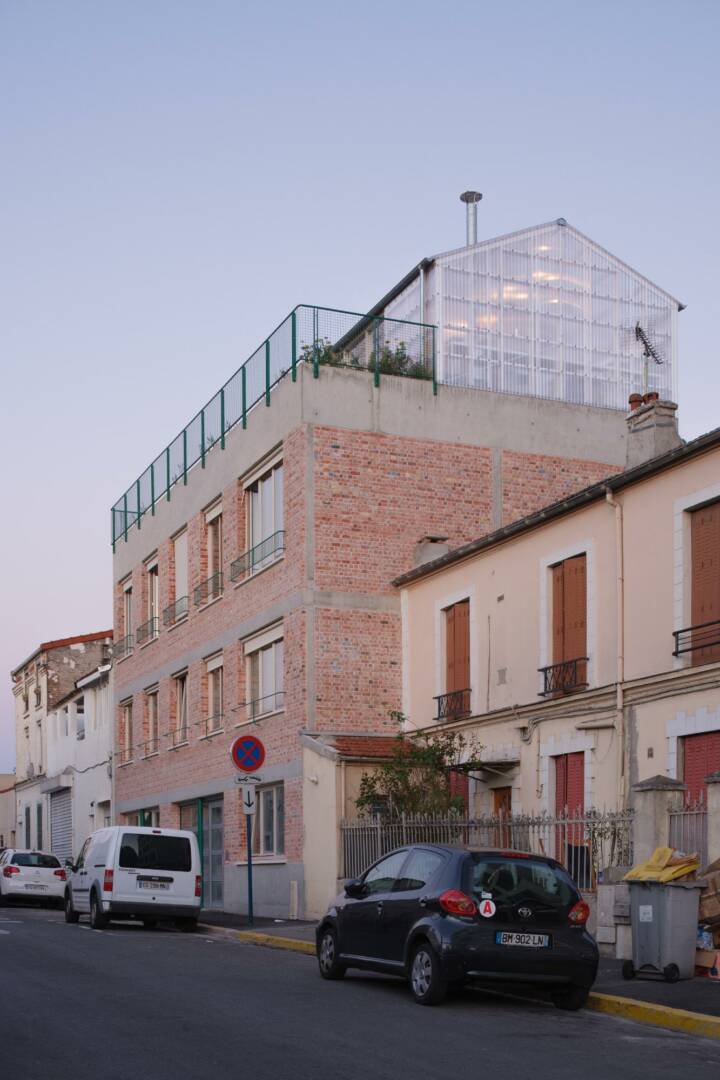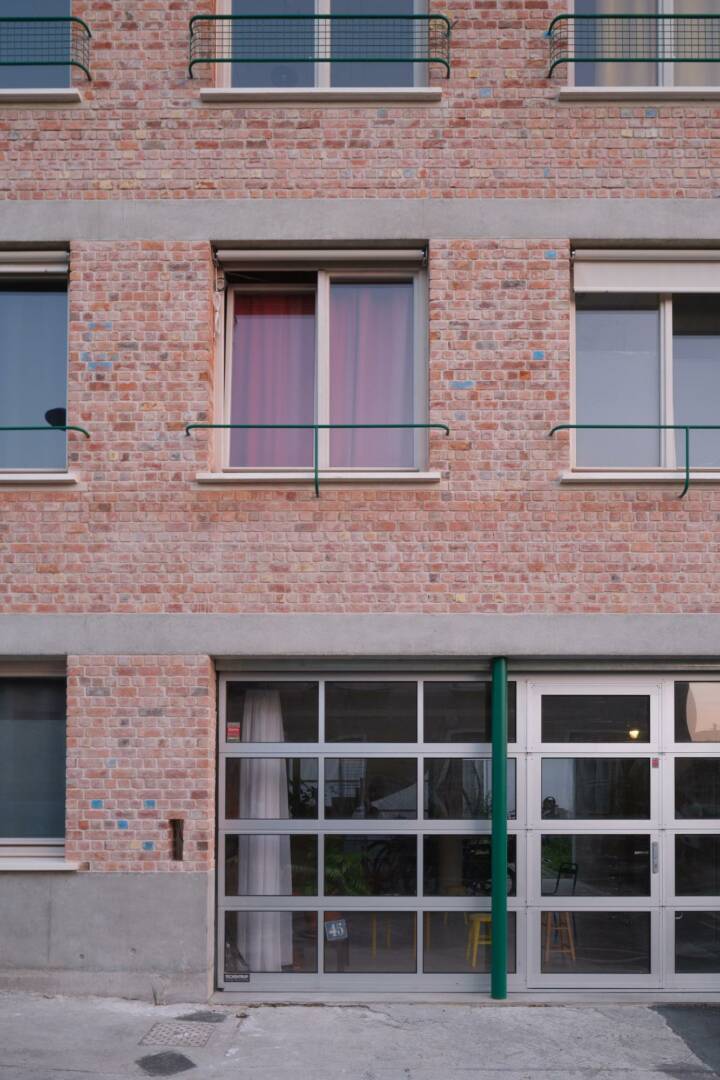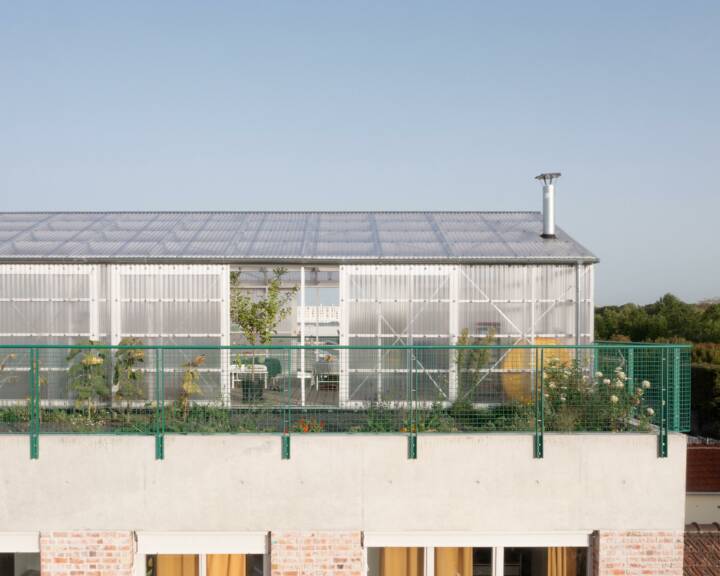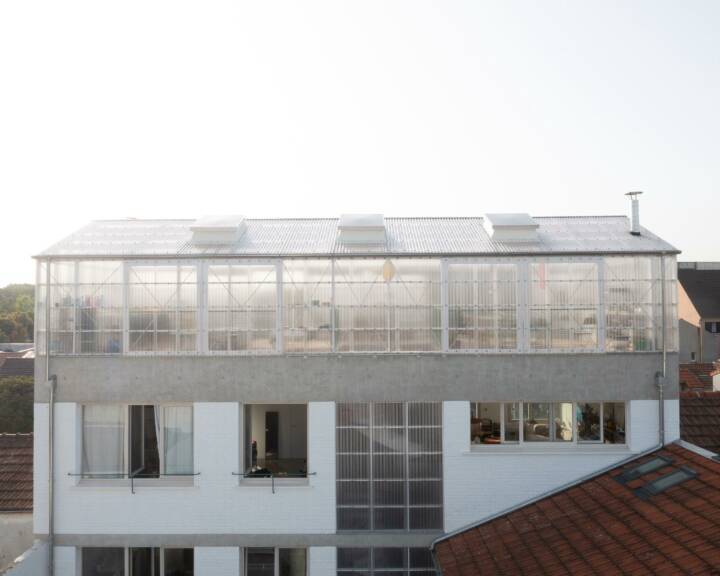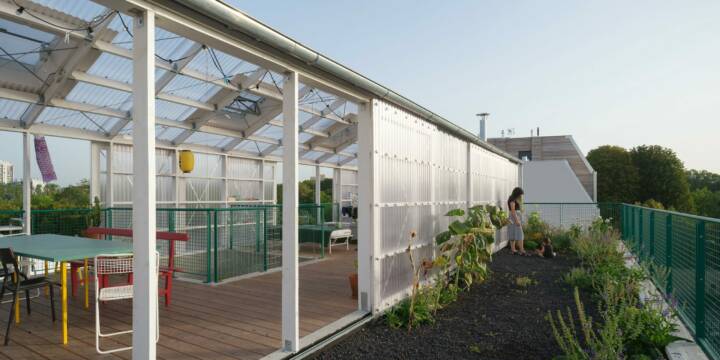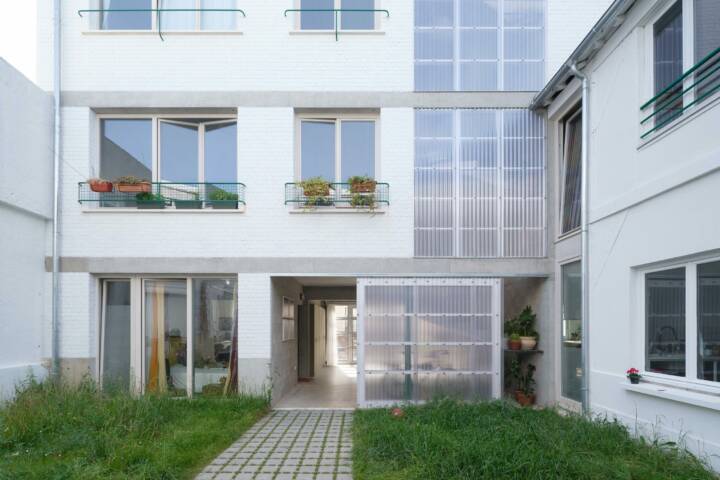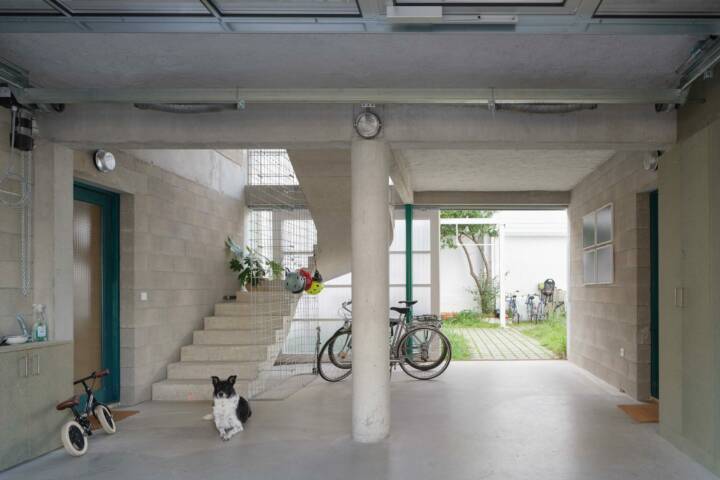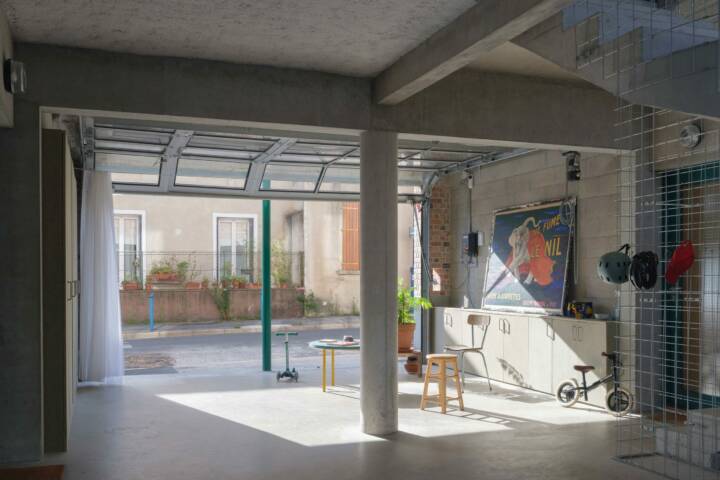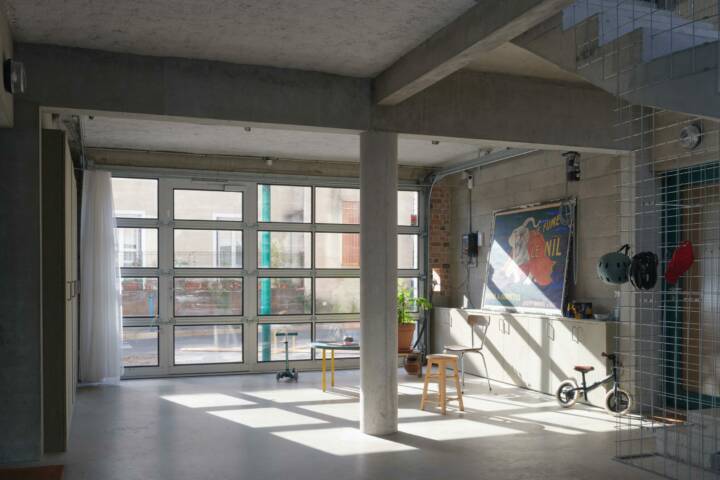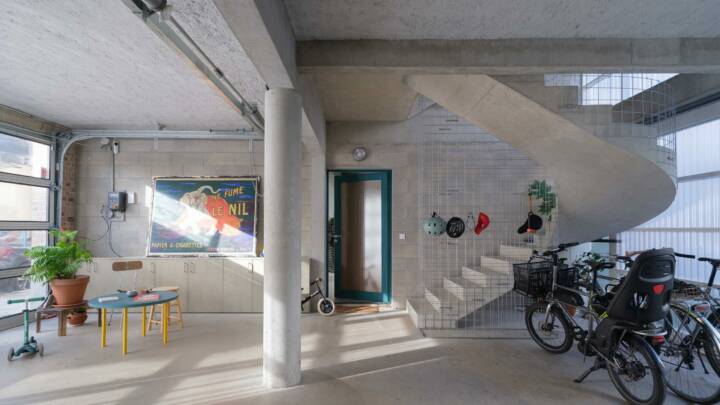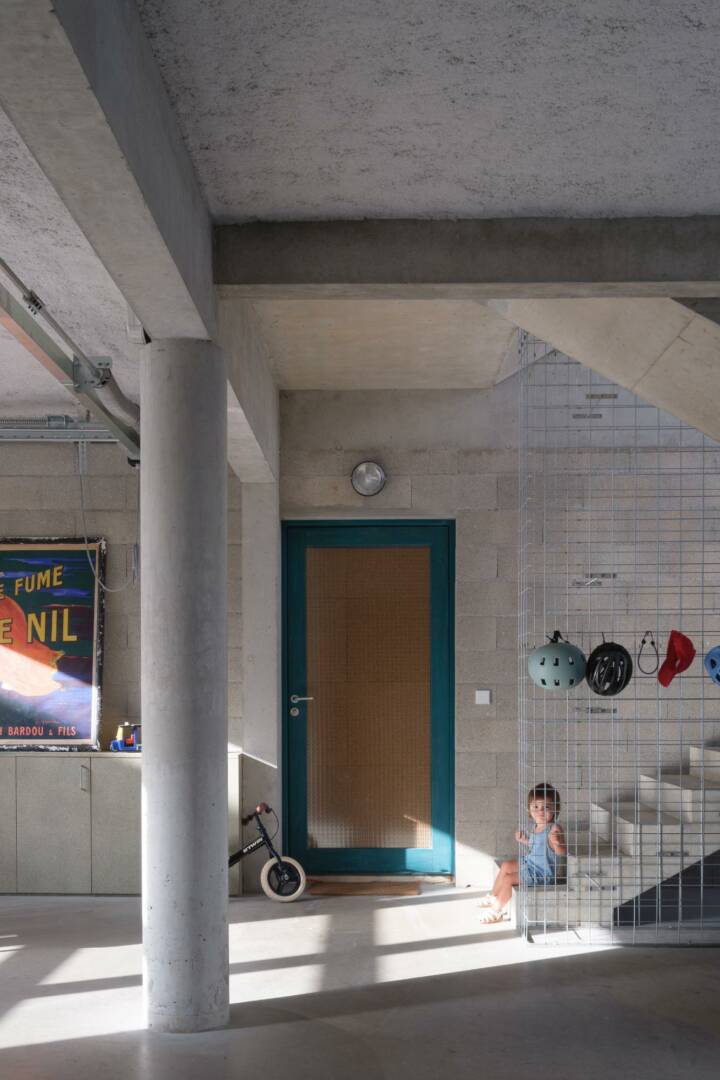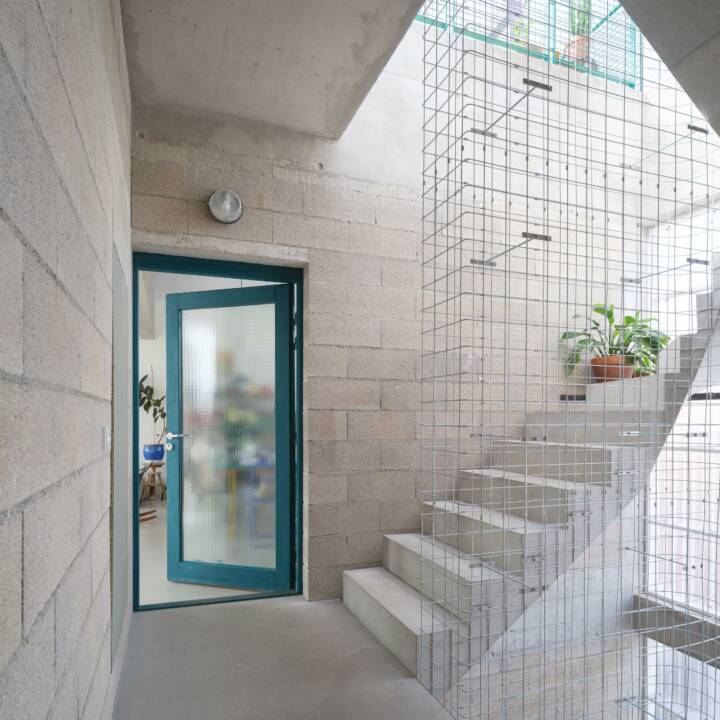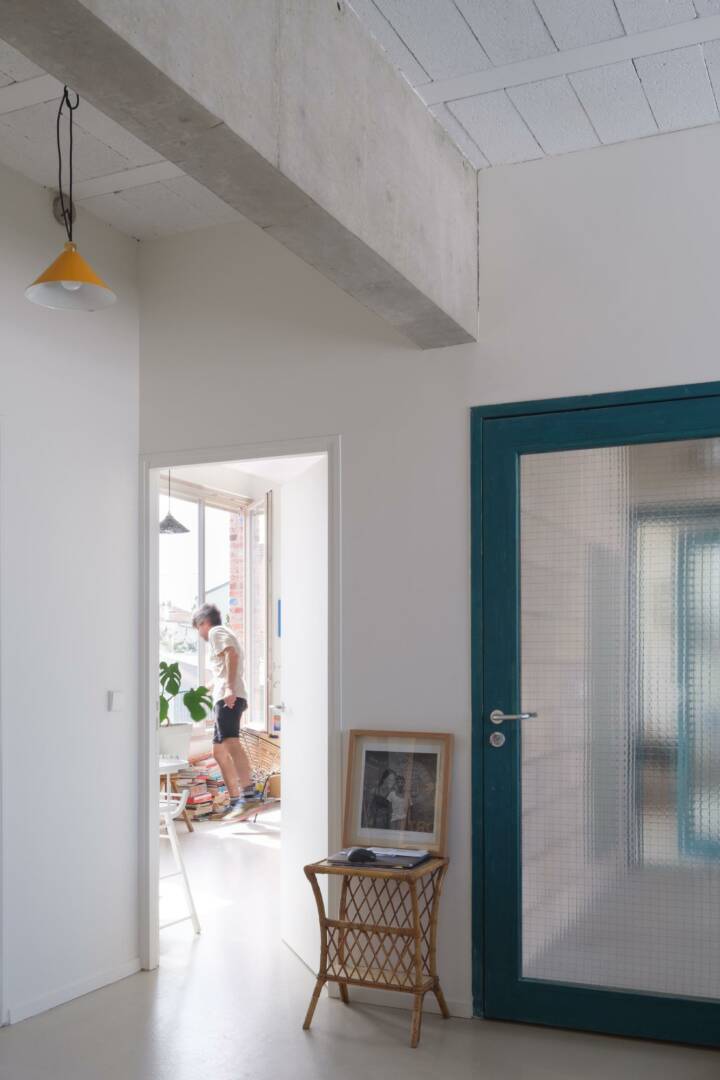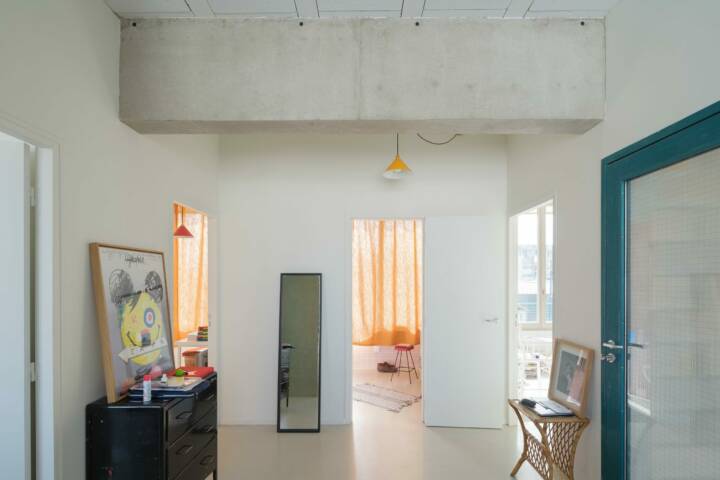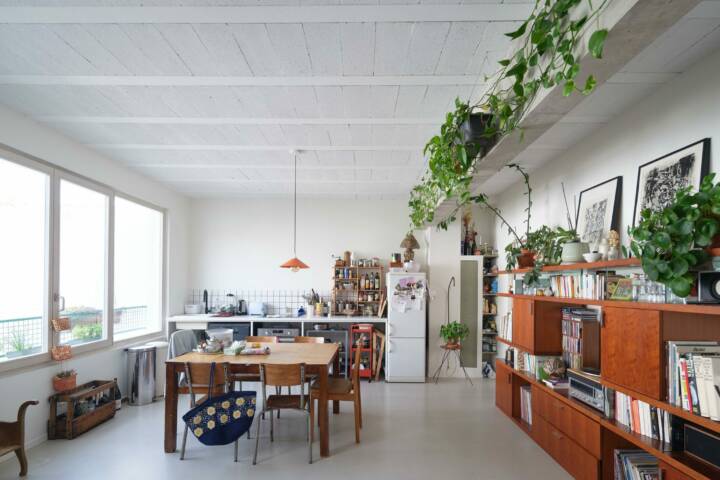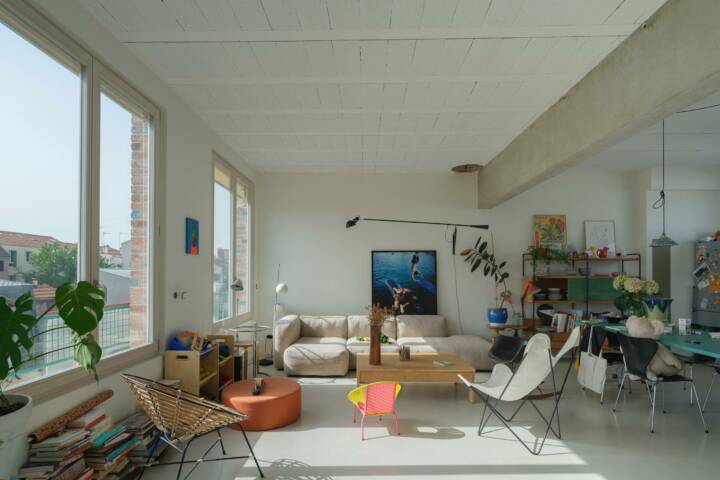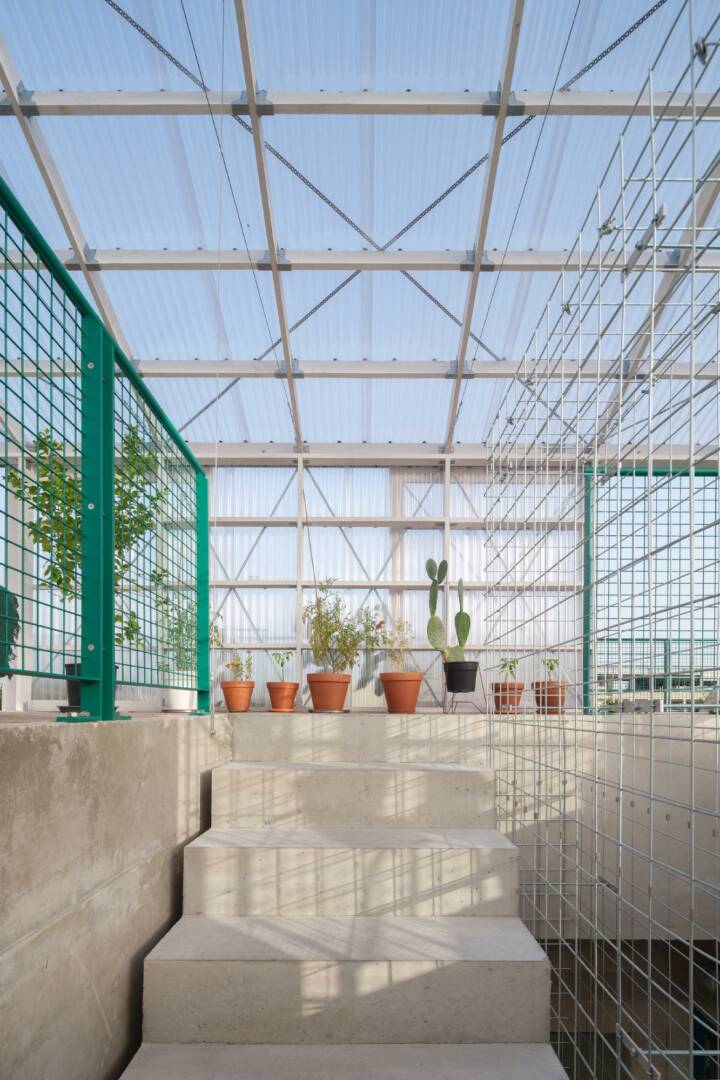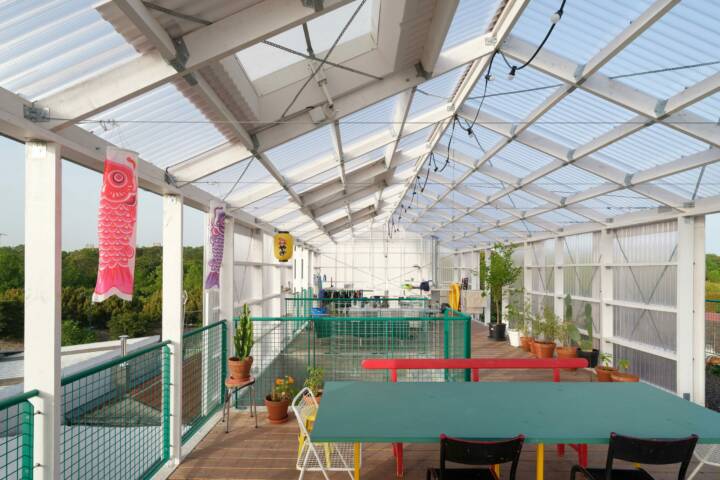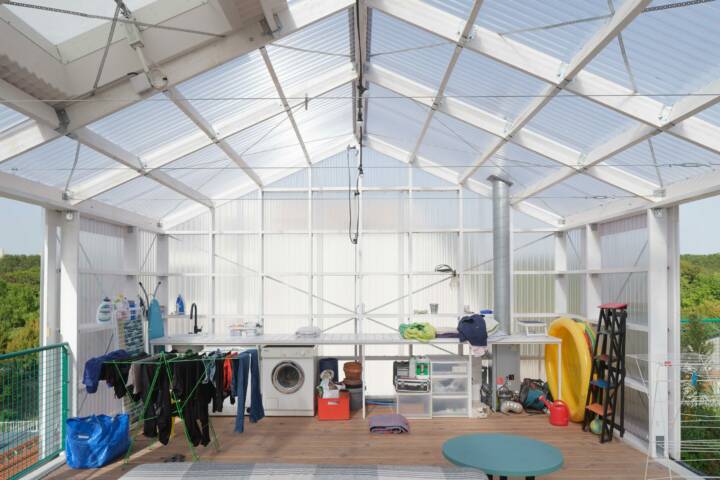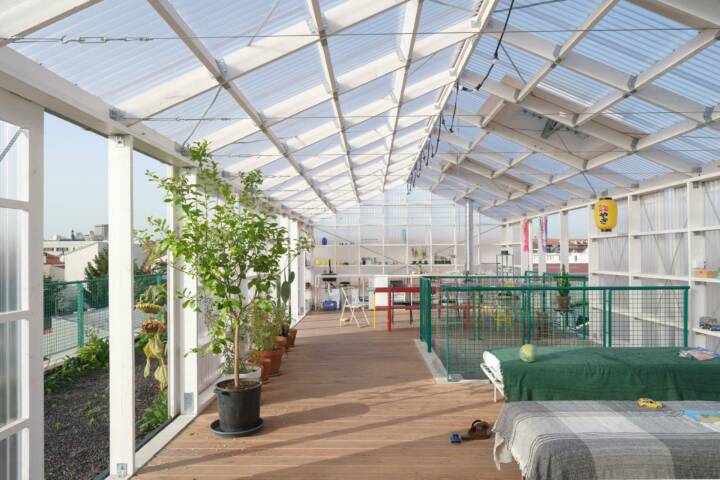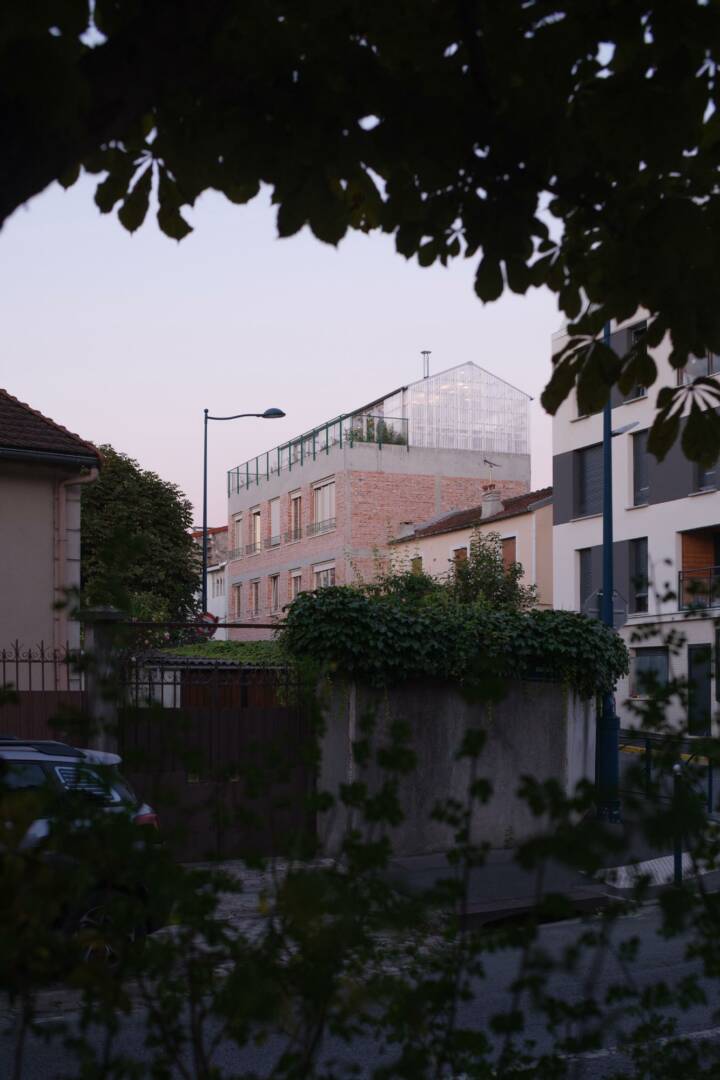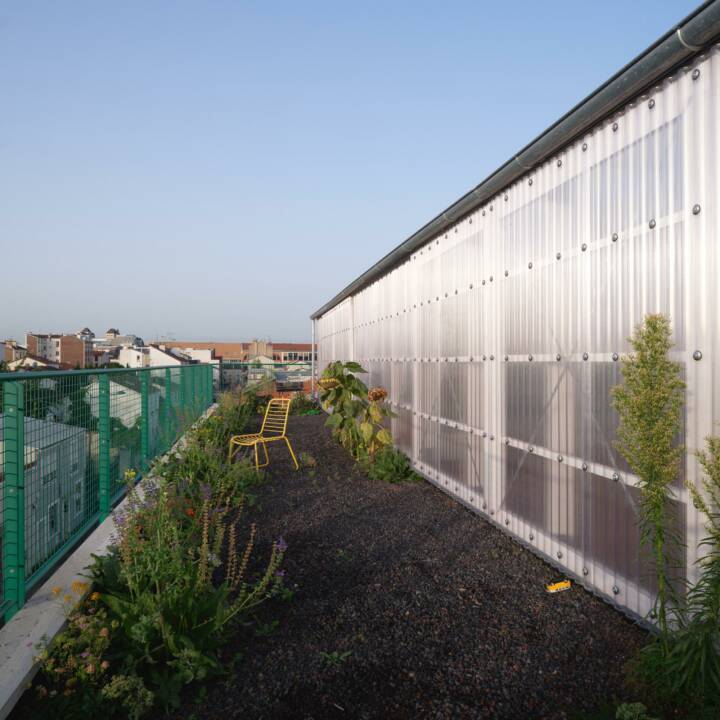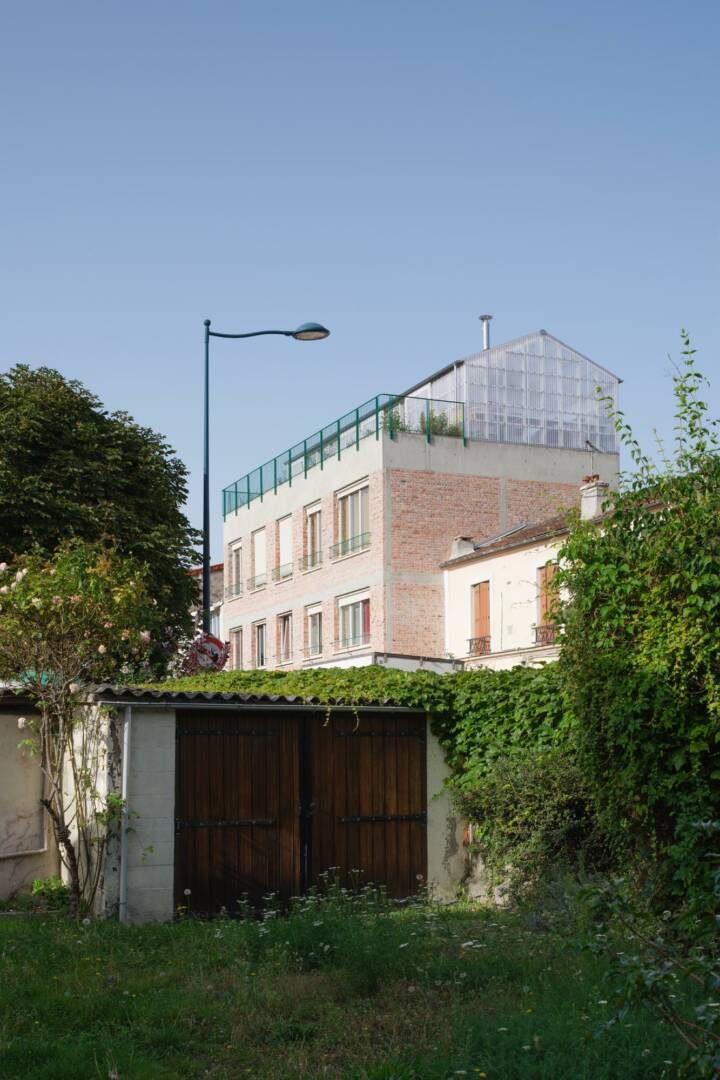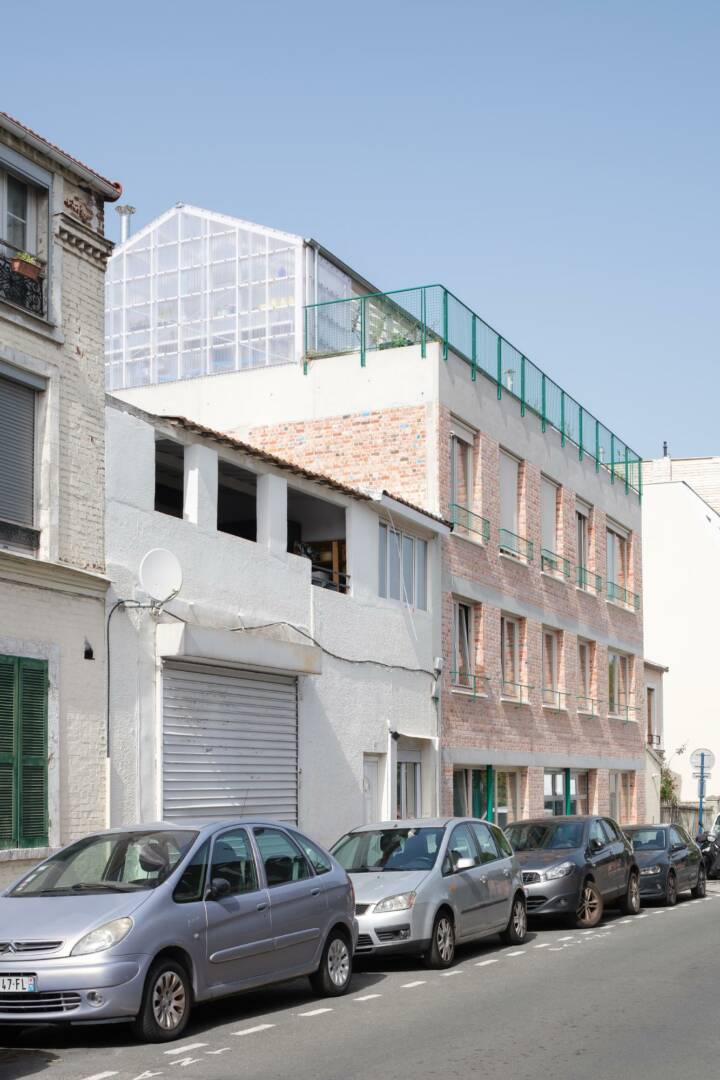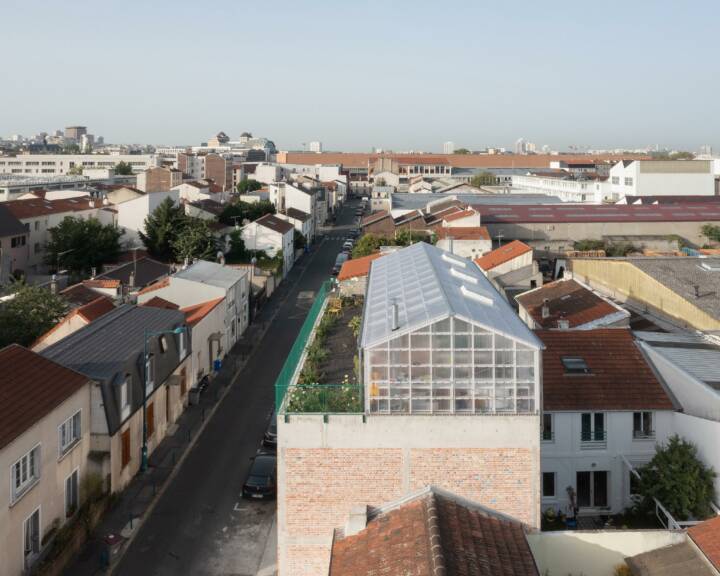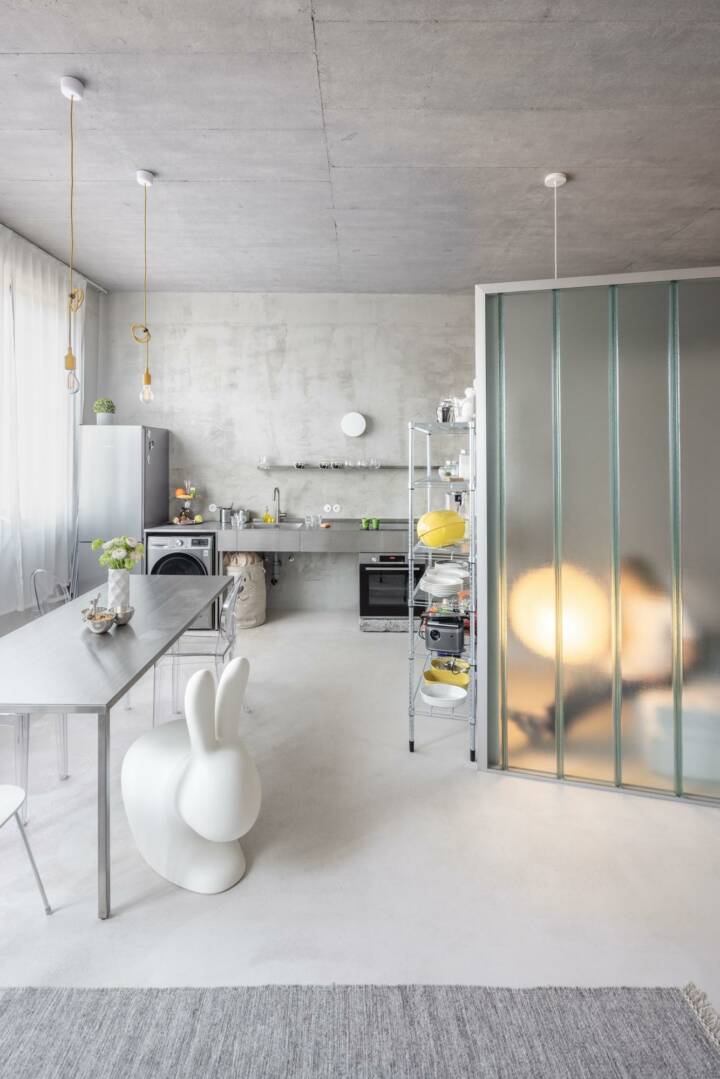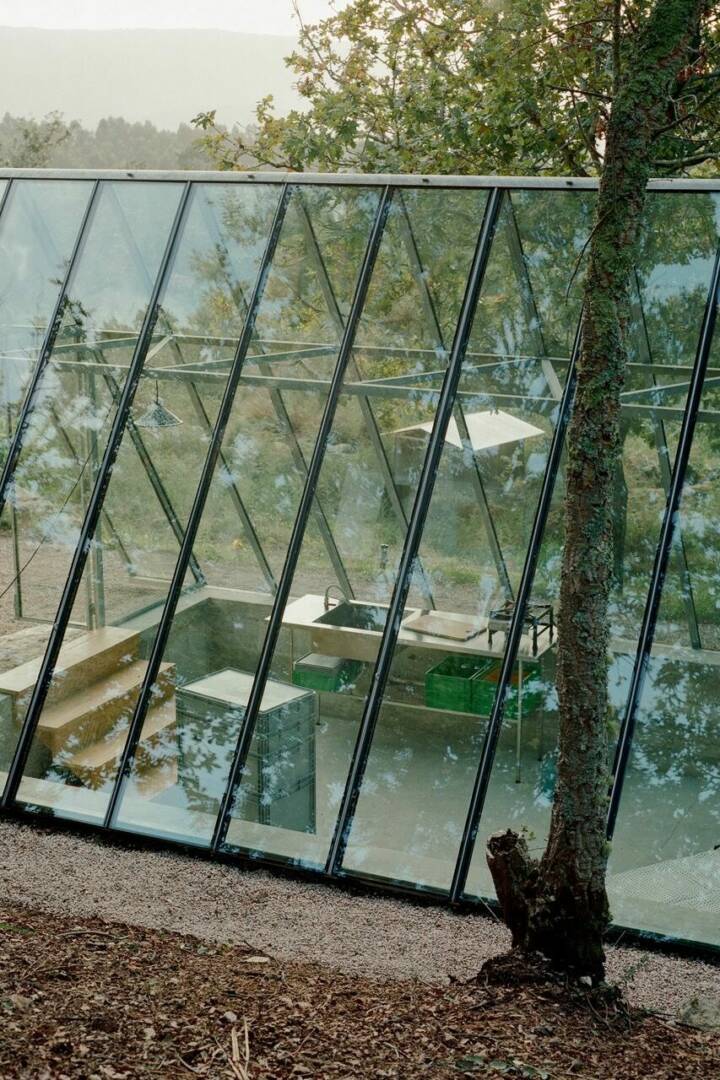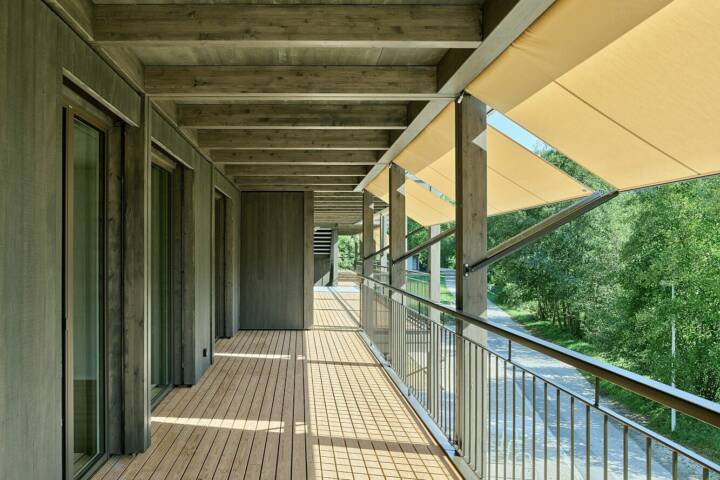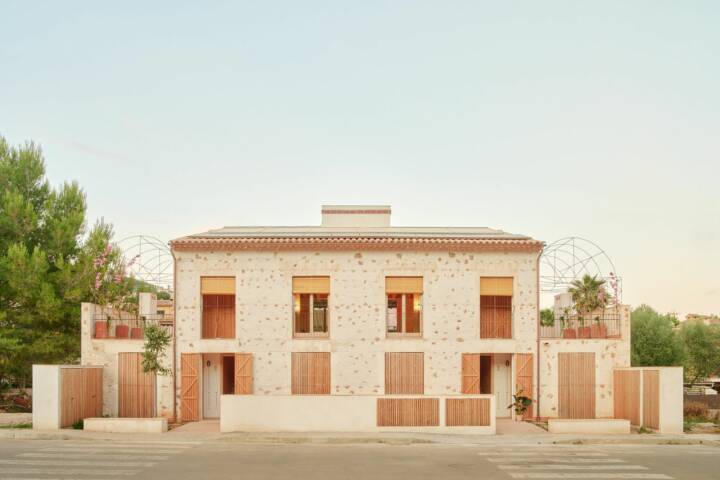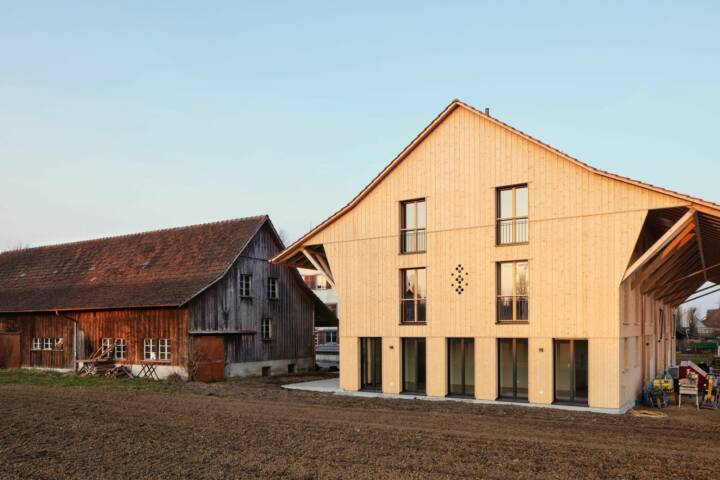Architects: Plan Comun Photography: Javier Agustín Rojas Construction Period: 2023 Location: Pantin, France
Maison Commune is a built manifesto and an open process with its inhabitants. It is a small housing project that defines and highlights a sequence of shared spaces and the joy of everyday life at all levels and without any excuse. It is a concrete evidence and a direct learning tool on how we want to live together.
1. Towards self-commission.
To design our own briefs has been key in the past and fundamental for the future of our practice. On this, Maison Commune is a specific model to learn from : we were able to design the brief from the very beginning, leading the administrative, financial and architectural studies and processes. Taking such responsibilities directly benefited the project. It allowed us to keep a good level of autonomy and openness when taking fundamental spatial and material decisions.
2. Site specificity and charm.
The plot of 15m x 17m is located next to the Parisian Cemetery of Pantin (an ignored metropolitan garden of 107 hectares) and included a two-floor L-shape worker’s house. The unique charm of this low density residential neighbourhood, closely surrounded by industrial buildings, dwells in the loose closeness to the city that surrounds it.
3. Open Design Process.
The initial project was an extension of the existing house towards the street. This option was discarded during the studies after confirming the fragility of the ground and existing structure. In the end we decided to demolish the volume towards the street (60% of the whole existing building), to provide a resistant new frame. The value of pre-existences needs to be confirmed case by case.
4. Simplicity, always.
The project is defined by a strong simplicity in the building site. A rational concrete skeleton (pillars & beams) of three floors is easily completed by prefabricated concrete slabs and masonry. A common sensical choreography avoiding useless complexity.
5. Re-use at the scale of the building.
Reclaimed bricks were found and cleaned in Belgium (less than 300km of distance, reducing even more the carbon footprint) and then tested in France. Towards the street bricks were left apparent, making visible its roughness and ageing. The interior facade is then painted white contributing to give unity and light to the new shared garden.
6. Form follows attitude.
Although the urban regulations allowed us to build 4 floors, we decided to build only 3. By doing so, we took care of the neighbours (avoiding to block the sunlight) and at the same time, which allowed us to have a covered shared space on the rooftop. In other words, building less private space, but ensuring generous spaces of encounter for the inhabitants.
7. Commons in sequence.
The ratio between domestic spaces (336,7 m2) and collective spaces (230,2 m2) is exemplary. A sequence of shared and non-heated spaces integrates accesses in all levels. The main entrance is defined by a transparent sectional door that offers a direct relationship with the street; the city then enters the building. The hall has an infrastructural character (leaving enough space for bikes and trolleys), connected with the inner courtyard and existing house. The vertical commons has its own identity: a concrete stairs casted on site is then enclosed by a light polycarbonate layer, thus expressing a cut-out in the facade towards the courtyard. Doors for accessing apartments are translucent, bringing light and depth to the interiors and extending the domestic life to the circulation spaces.
The system of commons is crowned by a generous greenhouse of 68,1 m2 (integrating a communal kitchen and laundry- and a terrace of 40,0 m2 with privileged views towards the surroundings.
8. Collaboration as a project.
The success of this project relied upon the collective intelligence of a diverse group of people. It profited from the knowledge and experience of colleagues, consultants and builders, bringing precision, rigour and challenging solutions along the whole process. On this, the handrail system (produced by Studio Emile) was developed as a project within the project.
9. Architecture as Propaganda.
The wooden-structure greenhouse on top of the building synthesises the will of the project, highlighting what we share, achieving maximum communication and dignity through minor and humble means (as Lina Bo Bardi would say) in everyday life and in the stressed city fabric.
Text provided by the architect.
